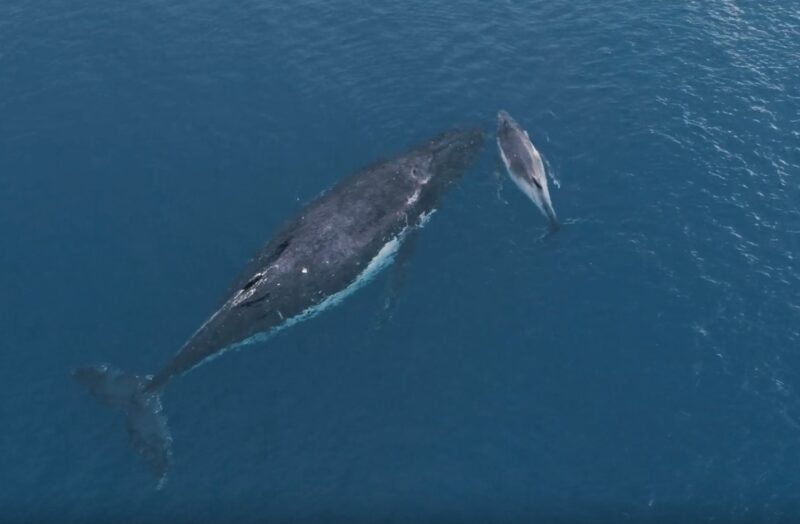Whales, the giants of the ocean, have captivated humanity with their majestic presence and complex behaviors.
As mammals, whales share a fundamental trait with humans: they nurse their young.
However, the whale’s underwater environment presents unique challenges and adaptations for this essential task.
Today, we will discuss the fascinating process of how whales breastfeed underwater, revealing the details of marine mammal biology and the maternal bonds that sustain the next generation of ocean giants.
Key takeaways:

- Unique Nursing Adaptations: Whales have evolved specialized adaptations for nursing underwater, such as mammary slits and a mechanism for squirting milk, ensuring efficient feeding without seawater intake.
- High Fat Content of Whale Milk: Whale milk is extremely rich in fat (35-50%), crucial for the rapid growth and development of blubber in calves, providing them with necessary insulation and energy reserves.
- Importance of Maternal Bond: The nursing period is vital for establishing a strong bond between the mother whale and her calf, which is essential for the calf’s social and emotional development.
- Human Impact on Whale Nursing: Human activities, including pollution and climate change, significantly impact whale nursing habitats and processes, highlighting the need for conservation and protection efforts.
- Role of Science and Education in Conservation: Ongoing research and public education are key to understanding whale nursing behaviors and promoting effective conservation strategies to protect these magnificent marine mammals.
The Basics
From the moment they enter the world, baby whales, also known as calves, are programmed to nurse.
Their survival hinges on their ability to find their mother’s mammary slits, guided by innate instincts and the scent of the milk.
This immediate bond between mother and calf sets the stage for a crucial period of growth and development.
Mammary Slits: A Whale’s Nursing Adaptation
A key adaptation in whales is the presence of mammary slits. Located discreetly on the whale’s body, same as it is on dolphins, these slits protect the feeding glands or nipples, ensuring that nursing can occur efficiently and safely underwater.
The Nursing Process Underwater
Contrary to many land mammals, whale calves do not suckle in the traditional sense. Instead, mother whales employ a unique method of lactation.
They have specialized muscles around their mammary glands that contract to actively squirt milk into the calf’s mouth.
This process ensures that the milk is delivered effectively without being diluted or lost in the surrounding water.
The Challenge of Seawater
One might wonder how whale calves nurse without ingesting seawater. The secret lies in the anatomy of their tongues.
Calves can form a tight seal around the nipple, creating a barrier that prevents seawater from mixing with the milk.
This adaptation is crucial for efficient and safe feeding under the waves.
The Composition and Importance of Whale Milk
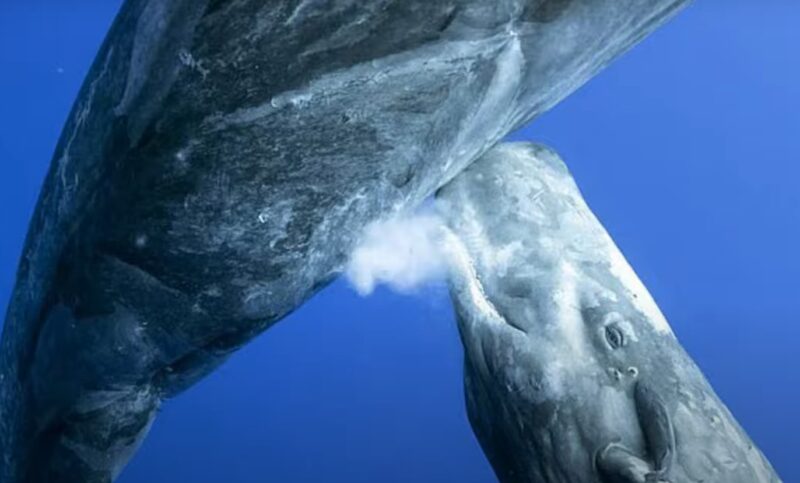
- High Fat Content for Energy and Growth: Whale milk is remarkably rich in fat, with a content of 35-50%. This high fat concentration provides the energy necessary for calves to develop their insulating layer of blubber, an essential adaptation for life in cold ocean waters.
- Nutritional Benefits Beyond Energy: In addition to energy, whale milk is packed with nutrients essential for bone development and a robust immune system. These components are critical for the overall health and growth of the calf, preparing it for an independent life in the ocean.
The Weaning Process
The nursing period in whales varies significantly among species, ranging from a few months to two years.
This duration is tailored to the needs and growth rates of each species, reflecting the diverse life strategies of whales.
Introduction of Solid Foods
As calves grow, they gradually transition to solid foods. In some species, this process begins as early as seven months.
The introduction of solid food is a critical step in the weaning process, marking the calf’s increasing independence and ability to sustain itself.
Human Perspectives on Whale Milk
While whale milk is a cornerstone of calf development, it is not fit for human consumption.
Its high-fat content, thick consistency, and unique taste make it incompatible with human dietary needs and preferences.
The Role of Whale Milk in Calf Development
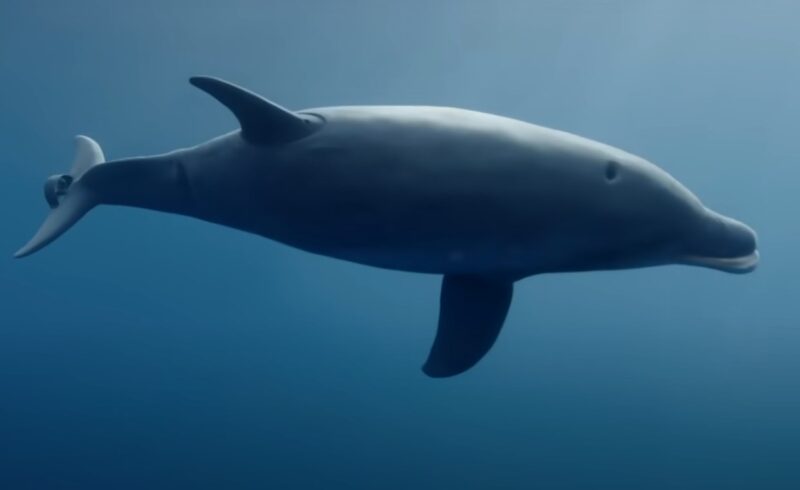
Accelerated Growth for Early Independence
The rich composition of whale milk enables rapid growth in calves, a necessity in the vast and predator-filled oceans.
This accelerated growth is vital for the calf’s early development, allowing it to quickly gain the size and strength needed for survival.
Building a Thermal Insulation Layer
The high-fat content of the milk is essential for developing the calf’s blubber layer.
This layer serves as thermal insulation, crucial for maintaining body temperature in the often frigid ocean waters.
It also acts as an energy reserve, supporting the calf’s development and survival.
Whale Nursing
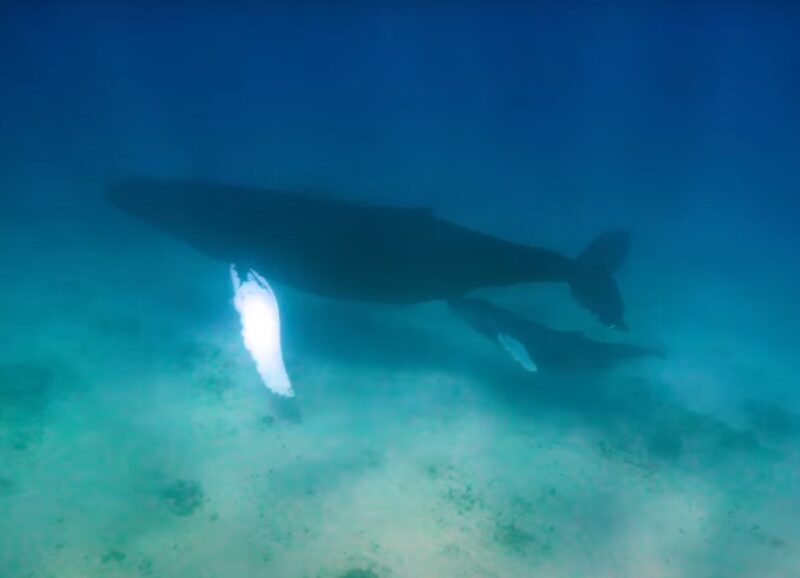
The Bond Between Mother and Calf
The nursing period in whales is also a time of intense bonding between mother and calf.
This bond is essential for the calf’s emotional and social development.
The mother’s dedication to her calf’s well-being, often at the cost of her own energy reserves, underscores the strength of this maternal bond.
Protection and Guidance
Throughout the nursing period, mother whales not only provide nourishment but also protection and guidance to their calves.
They teach them essential survival skills, such as navigation, social interactions within the pod, and hunting techniques, preparing them for life in the ocean.
The Fragility of Whale Populations
Despite their immense size and strength, whale populations are vulnerable.
Human activities like commercial fishing, shipping, and pollution significantly impact whale nursing habitats.
The disruption caused by noise pollution, for instance, can interfere with the communication between mother and calf, which is essential for successful nursing and bonding.
The Threat of Climate Change
Climate change poses a substantial threat to whale populations. Changes in ocean temperatures and currents can lead to shifts in the distribution of key prey species, directly affecting whale feeding and nursing.
Knowing about these impacts is crucial in developing strategies to mitigate the effects of climate change on marine ecosystems.
FAQs
How does the high fat content of whale milk compare to human milk?
It has a much higher fat content, around 35-50%, compared to human milk, which typically contains about 4% fat. This difference reflects the need for rapid growth and insulation in calves.
Do all species of whales have the same nursing duration?
No, the nursing duration varies significantly among different species. It can range from a few months to up to two years, depending on the species’ specific biological and ecological needs.
How does a whale calf breathe while nursing underwater?
Calves hold their breath while nursing. They surface for air, then return to nurse, alternating between feeding and breathing.
Can whale calves swim immediately after birth?
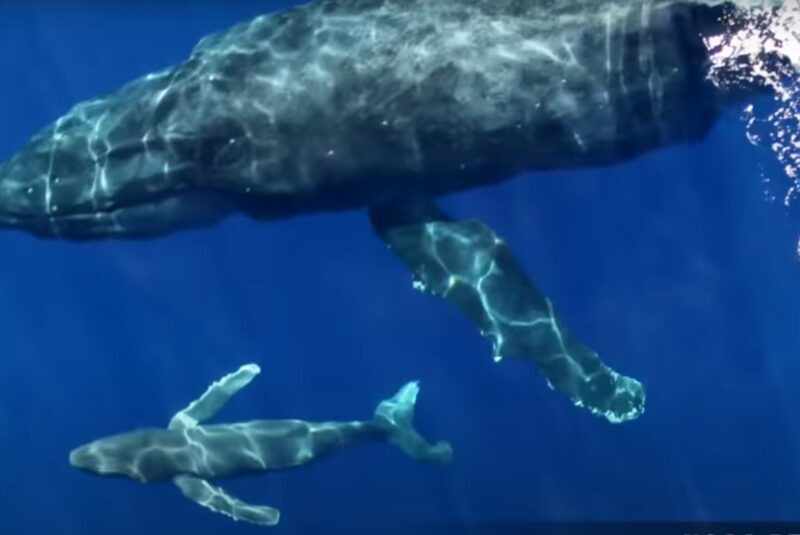
Yes, calves are able to swim shortly after birth. This is crucial for them to stay close to their mothers for warmth, protection, and nursing.
Is the mother whale’s diet important during the nursing period?
Yes, the mother’s diet is crucial as it directly affects the quality and quantity of her milk. A nutrient-rich diet ensures the calf receives the necessary nutrients for proper growth and development.
Do whale calves nurse exclusively, or do they consume other food as well?
Initially, calves nurse exclusively. As they grow, they gradually start incorporating solid food into their diet, though this transition period varies among species.
Final Words
The underwater nursing of whales is not only a testament to the marvels of evolution but also a poignant reminder of the universal bond between mother and child.
This intimate glimpse into the lives of the ocean’s largest inhabitants offers us a deeper understanding of the complexity and resilience of life on our planet.
As we continue to explore and study these extraordinary creatures, we are reminded of our responsibility to protect them and the oceans they call home.
Related Posts:
- How Do Dolphins Breastfeed Underwater? Ocean Wonders
- Is A Shark A Mammal Or A Fish? - A Case of Mistaken Identity
- 11 Largest Whales of North America: Unveiling the…
- 5 Reasons Whales Are Mammals Not Fish - What Sets…
- How Many Stomachs Does a Cow Have? - Explained!
- Are Turtles Reptiles? Fascinating Reptiles Explained


